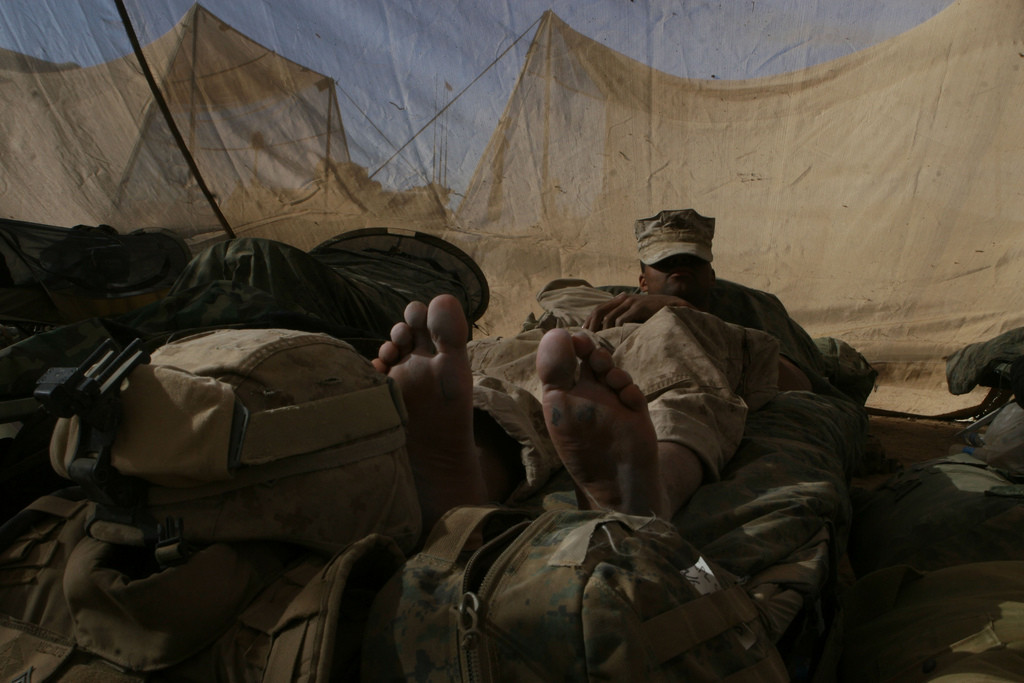

Editor’s note: Charlie Mike is our blog on military and veterans issues. From basic training to the VA, this is the place to share stories and engage on topics important to the men and women that have worn our nation’s uniforms. If you have something to say, reach out to us at Charlie.Mike@warontherocks.com!
“War is hell,” William Tecumsah Sherman once famously quipped. And in so many ways it is. But war also has a way of creating situations absurdly incongruent with reality — situations that seem impossibly strange by their occurrence in a combat environment, and yet are made all the more funny by that context, at least for those of us who were there.
It was early August of 2004 and the 24th Marine Expeditionary Unit had only been in country for less than a month. The heat was stifling. When you compound Iraq’s roasting summer climate by sitting in a large metal and Plexiglas cockpit with no air conditioning, covered in 60 pounds of flight gear and body armor, you create the equivalent of being dressed for the summit of Mount Everest while sitting in the 150 degree sauna at your local gym (note to the aircraft engineers, please add air conditioning in all future military helicopters). Needless to say, it saps the strength from your body and requires gallons of hydration on a daily basis. The heat is just as much of an enemy as the guy wearing a shemagh and packing an AK-47 who doesn’t like his un-invited American guests, although at least the heat’s attacks were predictable. Not so much with the unhappy locals who were always plotting ways to hasten our demise.
Our CH-53E helicopter detachment was temporarily based out of the old Iraqi Air Force base Al-Asad, which is situated in a basin west of Baghdad and south of Haditha in Al-Anbar province. Our initial mission was to fly left seat/right seat missions with a sister CH-53E squadron that was preparing to go home. These flights were to orient us, the new aircrews, to what would be our operating environment and home for the next eight months. We were also inspecting and accepting four CH-53E helicopters from our sister squadrons, since higher had decided that we would “fall in” on assets already in country and we had arrived without any helicopters.
Despite our extremely busy schedule made up of both flying missions and accepting four aircraft, I remember quite distinctly the base itself. I remember sitting in a section of a building that had once been the Iraqi Air Force Officer’s Club, watching Lance Armstrong pursue another Tour de France Championship on TV (long before the doping scandal would mar the reputation of this great competitor). I also remember watching a movie at the base theater, the lobby of which was quite ornate with its marbled floors and fancy tapestry. Sitting in the theater made me ponder: “I wonder if Saddam Hussein sat here watching movies with his generals.” Then there was the large pothole on one of the paved roads outside the theater that was the impact site of a rocket that had landed some months before, killing a U.S. service member as he strolled down the street. It was all very surreal, actually.
Then it happened one morning. Our aircrew was sleeping in one of the “transient” tents, nothing more than a very large canvas shelter with plywood floors and piped-in air conditioning from one of the large chiller units outside. There were the obligatory sandbags that ringed the tent for “protection” but if I recall right there were only about knee-high! With all of America’s robust machinery and equipment we evidently still hadn’t learned how to properly dig and build fortified shelters in combat zones. Maybe we should force our Professional Military Education (PME) system to incorporate the study of the Imperial Japanese Army and North Vietnamese Army engineering and defensive systems. Those boys could dig, as any Allied WWII or Vietnam Infantry veteran will attest!
And then…crump, Crump, Crump, CRUMP… ”Incoming!” screamed the voice that awoke us from our slumber. At first I thought I was dreaming, but as I rolled over I saw one of our corporals (an airframes mechanic) rolling out of his sleeping bag and onto the floor. He then proceeded to grab his cot by both sides and pick it up to use as a shield. I was struck with awe and wonderment, almost frozen in my own cot, thinking, “he really can’t be using that cot as a shield, can he?” Yet there he sat, whipping the body of that cot towards the sound of the explosions as if it was Kevlar wall that would stop anything from coming his way. In that moment, my bewildered amusement was superseded only by my next coherent thought: where was my body armor and helmet? By the time I figured it all out, the danger had come and gone. The danger had passed about as fast as a 200-meter, ten-round rapid-fire iteration on the rifle range. Fortunately, no one was injured in this attack. Unfortunately, there would be a lot more of this to come in the next eight months. However, the memory of one Marine and his cot will forever be burned into my memory. Looking back on it now it brings a slight smile to my face. You can’t stop shrapnel with canvas.
Michael M. McCloud is a former Major in the Marine Corps, in which he served from 1996-2010.
